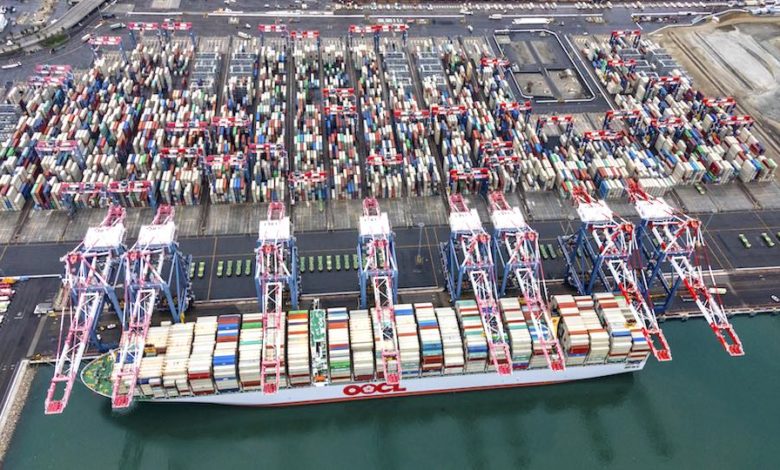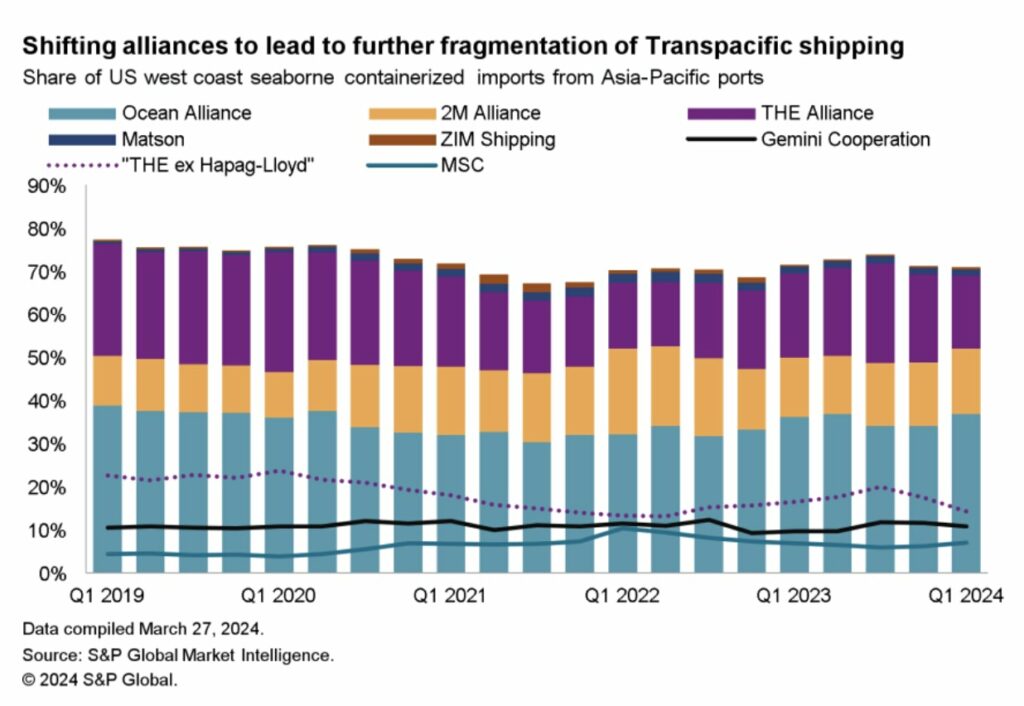Transpacific container contracts ‘substantially below’ initial asking rates

The first batch of transpacific contracts are concluding for the May 2024-April 2025 period with analysts at Jefferies reporting Asia-US west coast rates are understood to be in the $1,400 to $1,500 per feu range, up from $1,200 per feu to $1,300 per feu last year. These agreements compare to current spot rates above $3,000 per feu.
“While the latest contracts are a bump from last year’s levels, they remain close to break-even levels, highlighting liners’ inability to capture stronger long-term rates given the supply outlook even against a stronger than expected market this year,” stated a shipping markets update from Jefferies yesterday.
Providing further specifics on the deals being concluded, Hua Joo Tan, co-founder of Asia-based container advisory Linerlytica, explained that there are various tiers of contracts being concluded with large beneficial cargo owner (BCO) rates expected to come in at below the $1,400 to $1,500 range, while smaller BCOs will come in at around that range. The $1,400 to $1,500 range was approximately what liners were making on the spot market in 2019, the year ahead of covid.
“These rates represent a slight increase compared to last year, but are substantially below carriers’ initial asking rates,” Tan told Splash, discussing this year’s contract negotiations, a process which has been prolonged and difficult this year with shippers having to factor in Red Sea diversions alongside a clear overcapacity building in the container fleet with more than one newbuild delivering every day this year.
The American economy remains strong with latest data from Descartes showing the US imported 2.1m teu last month, up 21% compared with the same month in 2019, pre-covid.
“March 2024 was a strong month and continues the robust performance that began in January 2024,” said Chris Jones, executive vice president at Descartes.
A high degree of variability in capacity from week to week has been wreaking havoc on the ability to maintain a stable pricing environment, argued Sea-Intelligence, a Danish liner consultancy, in its latest weekly report.
Pricing in this industry, Sea-Intelligence maintained, is asymmetric.
“It is easier to lower rates than to increase them. An unstable capacity situation will therefore cause an effective downwards pressure on rates – which is also what is currently unfolding,” Sea-Intelligence stated.

